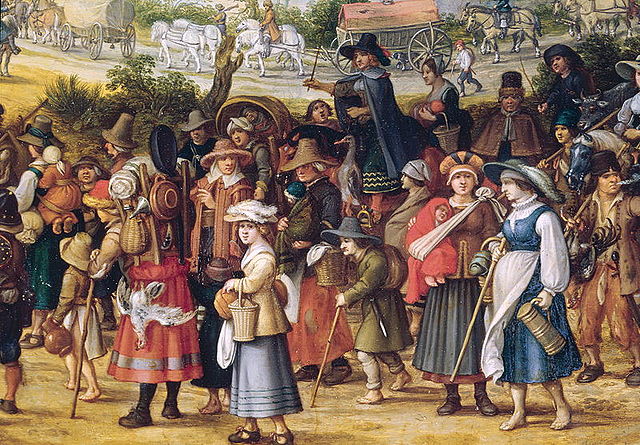The Conestoga wagon, also simply known as the Conestoga, is an obsolete transport vehicle that was used exclusively in North America, primarily the United States, mainly from the early 18th to mid-19th centuries. It is a heavy and large horse-drawn vehicle which, while largely elusive in origin, originated most likely from German immigrants of Pennsylvanian Dutch culture in the Province of Pennsylvania in the early 18th century. The name "Conestoga Wagon" probably derived from the Conestoga River Valley settlement area in the province and saw usage as early as 1717, although it is not known whether the first wagons referred as such had similar builds as later Conestoga wagons.
Conestoga wagon, National Museum of American History
The Conestoga River in Pennsylvania, which the Conestoga wagon name may have derived from
1862 print of a Conestoga wagon operated by draft horses and drivers
Illustration of a Conestoga horse, a breed of draft animal used for Conestoga wagons, in 1863
The Pennsylvania Dutch, also referred to as Pennsylvania Germans, are an ethnic group in Pennsylvania and other regions of the United States, predominantly in the Mid-Atlantic region of the nation. They largely descend from the Palatinate region of Germany, and settled in Pennsylvania during the 17th, 18th, and 19th centuries. While most were from the Palatinate region of Germany, a lesser number were from other German-speaking areas of Germany and Europe, including Baden-Württemberg, Hesse, Saxony, and Rhineland in Germany, the Netherlands, Switzerland, and the Alsace–Lorraine region of France.
The Flag of Pennsylvania in 1863
Lancaster, Pennsylvania
Actress Hedda Hopper (left) was Pennsylvania Dutch
Many Palatines fled to the Pennsylvania Dutch Country








